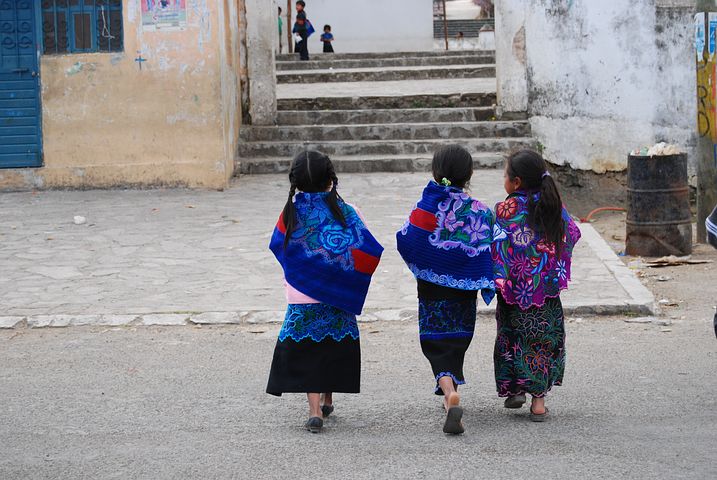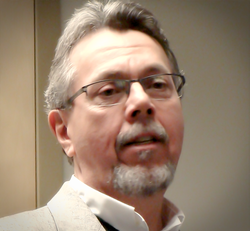The dangers we ascribe to others are the same dangers embodied in ourselves. Building a wall won't protect us. It will only serve to further isolate us from the warmth and beauty of our gracious neighbors. I had the privilege recently to take a cultural immersion tour of the Baja peninsula of Mexico and I can say that the people I’ve met don’t in any way reflect the description of them depicted by Donald Trump and his supporters. What I have found is a people who embody a sense of faith, family and community.
In San Diego at the start of the tour, I attended a lecture on the border region of Tijuana and San Diego conducted by Dr. Norma Iglesias Prieto from the San Diego University Department of Chicana and Chicano Studies. She showed how over 130,000 people per day cross that vital border between the two countries, most of whom do so for work. Why? One reason is the fact that the average hourly wage in San Diego is $11.00 while in Tijuana it is fifty cents or $4.00 per day. It is becoming increasingly difficult to secure the documents needed to travel for work from Mexico to America, causing additional economic strain on an already stressed region. The American government plan to further complicate the border crossing will only exacerbate an already difficult situation for people whose main motivation is to improve the lives of their families. From San Diego, we traveled to the port city of Ensenada where it was Sunday; a day set aside for family. The museums and parks were open and free for families to visit. At the museum I toured, there was a play being performed for the children who sat in the audience close to the stage as their parents sat behind, watching with amusement as the children laughed and enjoyed a story of a prince and a princess. As I strolled along the boardwalk of Ensenada, I saw teems of families – grandparents, moms, dads and children - walking together, enjoying ice cream or stopping to listen to one of the several Mariachi bands playing in the park or on the a boardwalk. Next stop was Catavina, a tiny community of less than 200 people. In Catavina, there is only a one-room school for all children attending grades first - eighth, taught by a single teacher. We were introduced to three, eighth grade students who told us their plans for high school and beyond. One wanted to be a psychologist, another a veterinarian and the third a mechanic. We also learned about how the community bands together to ensure that every young girl can have her own, very special Quinceanera. This is only possible because the entire town chips in to help. One mom will help make the dress, several others will supply the food, other community members will play music and the church will donate the church hall for the event. No one family can afford this special rite of passage celebration for their daughter, but together, the entire community can ensure that no one is left out. In San Quintin, we learned about the Mexican Ejido. An Ejido (pronounced Eh-He-Doe) is a form of land cooperative instituted by the government at the end of the Mexican revolution in the early 1900’s. Community members identify land owned by the very rich which isn’t being put to productive use. These families can petition the government to allow them access to work the land and reap the benefits of their labor. The Ejido has been recently under attack, but it has also expanded beyond agriculture and now includes opportunities for Ejido members to take advantage of the growing Mexico tourism industry. For example, in La Bufadora there is a spot where the ocean will roar into a small passageway and then burst up over 30 feet into the air between a rock crevice. This has become a tourist attraction. An Ejido was established near this site and now, dozens of Ejido merchants line the street leading up to the blow hole selling crafts, food and other items the tourists may purchase. Without the Ejido, none of these families would have an opportunity to reap the benefits of the tourism dollars. In St. Ignacio, a town of about 1,000 people, there is a beautiful town square that is dominated by a Mission church, built in the late 1700s. There, we met a teacher who is working with middle school students and preparing them to compete in a state music competition. In order to help the students raise the money needed to attend the competition, the teacher travels from restaurant to restaurant, serenading customers and using the tips he receives to help defray the cost of the trip. Without the determination of this talented teacher, these children could never afford to attend this event which will most certainly expand their world view. One of the saddest encounters we had with the people of Mexico was in the tiny town of In Santa Rosalia. There, we were approached by a group of elementary school children, still in their school uniforms, who seemed to want to practice their English. They spoke halting English while our group was equally challenged in speaking Spanish. But through our combined efforts, we could communicate. What we learned – in this unsolicited conversation with the children – was that they were deeply troubled by the talk of America building a border wall, and they were disturbed over how their own country was being portrayed. These children live hundreds of miles from the American border, but that did not lessen the profound impact they felt from the deteriorating relationship between our two countries. Donald Trump depicts the Mexican people as “bad hombres”; as rapists, murderers and drug dealers. That is unfortunate. On my tour of this rugged Baja peninsula, I found only people with a warm and welcoming heart whose core values of faith, family and community were lived out in their daily interaction and in how they treat their guests and their neighbors. We say we want to build a wall along the Mexico border to protect America. But the dangers we ascribe to others are the same dangers we embody in ourselves. Building a wall won’t protect us, it will only serve to further isolate us from the warmth and beauty of our gracious neighbors.
0 Comments
Your comment will be posted after it is approved.
Leave a Reply. |
AuthorMichael Soika has been a community activist for more than 30 years working on issues of social and economic justice. His work for justice is anchored by his spiritual formation first as a Catholic and now as a Quaker. Archives
June 2018
Categories |


 RSS Feed
RSS Feed